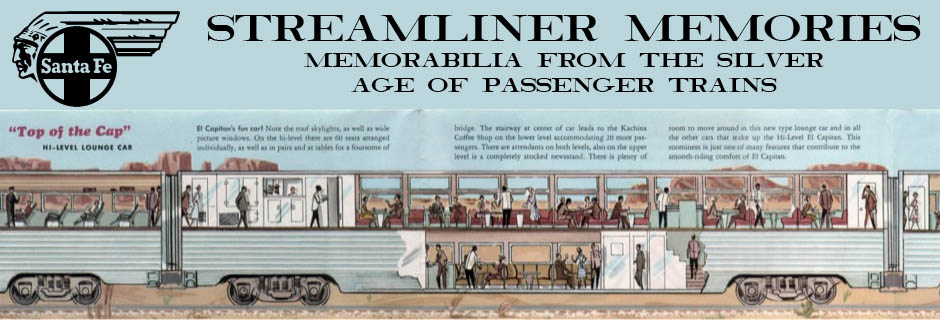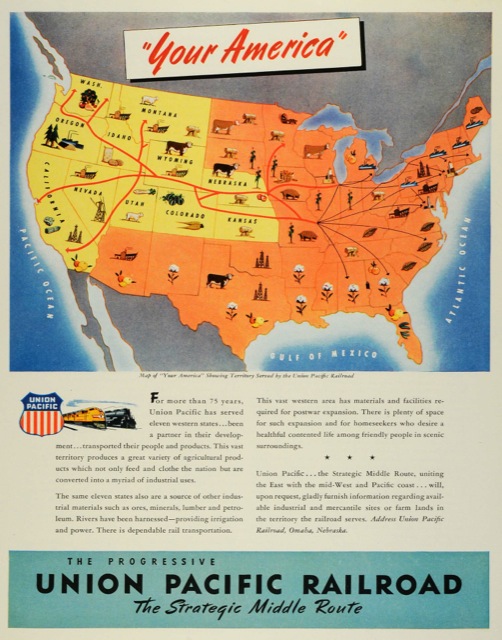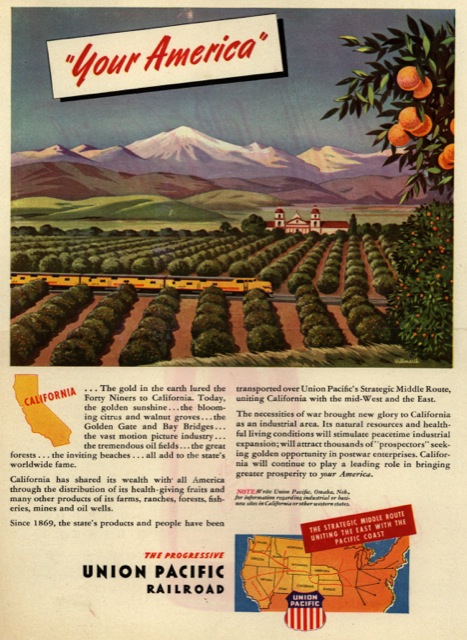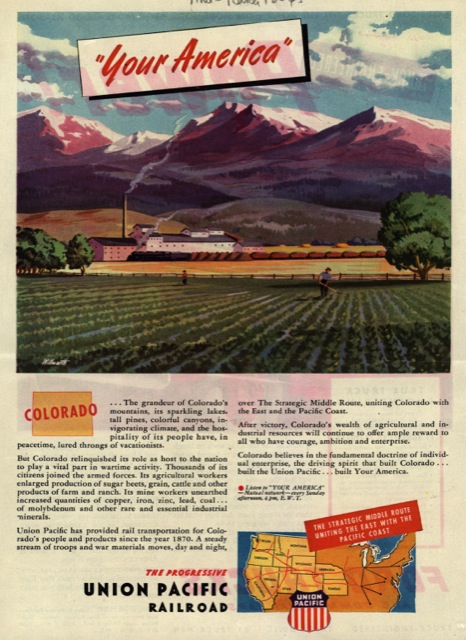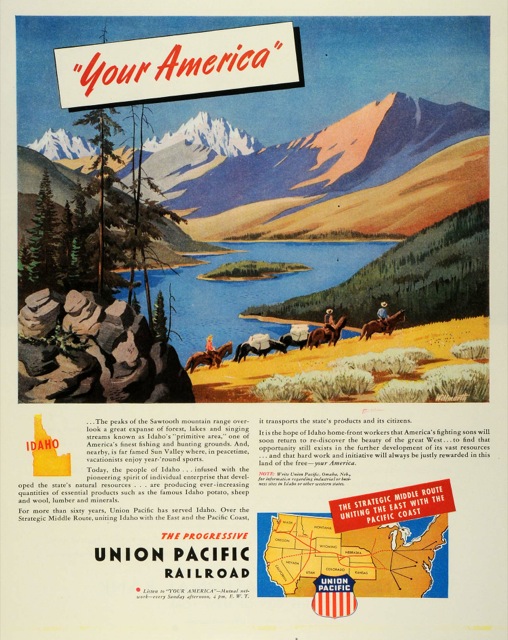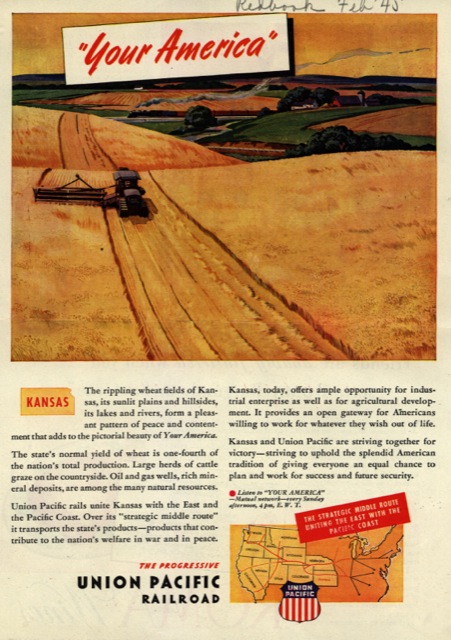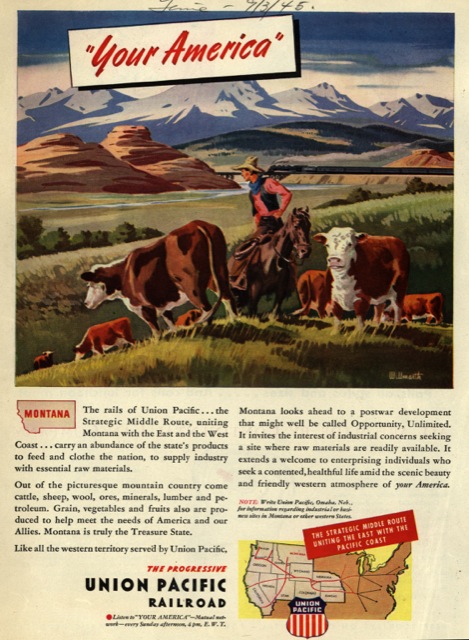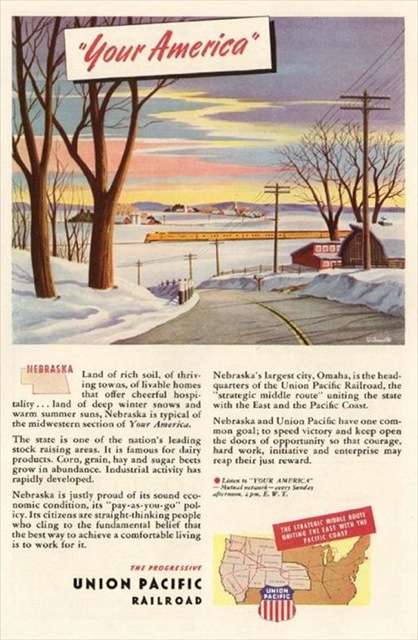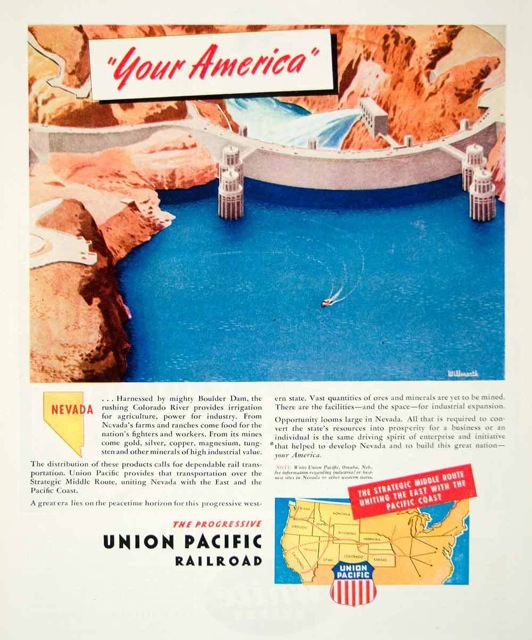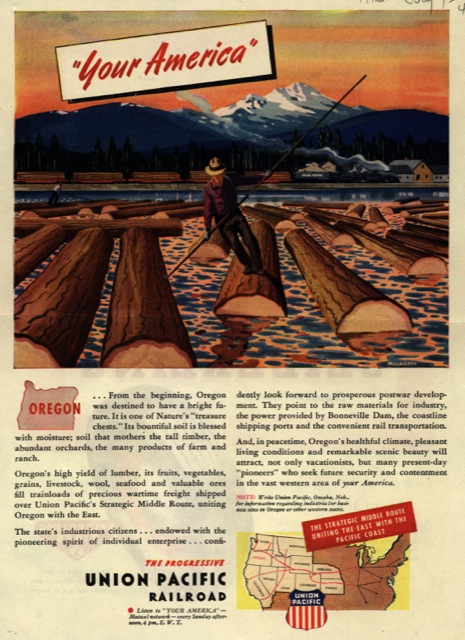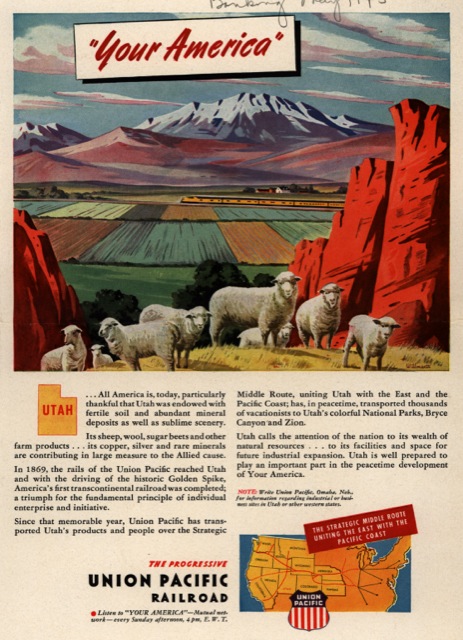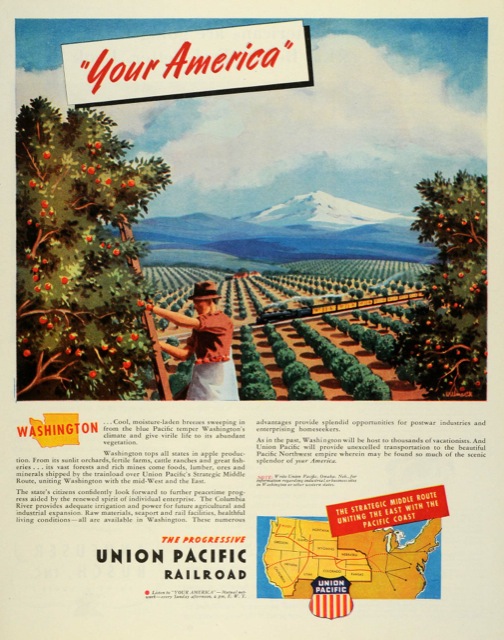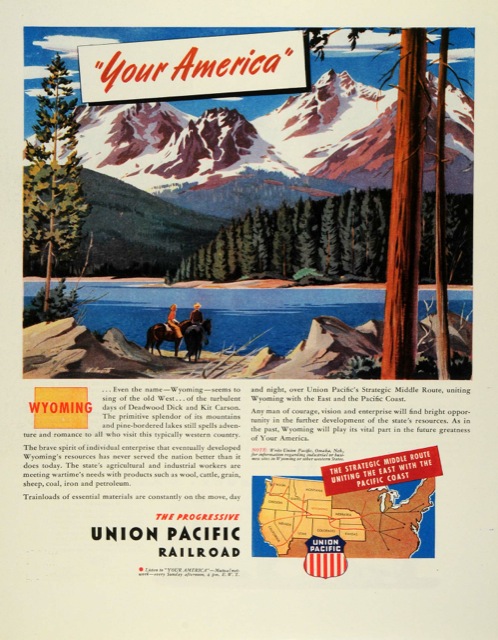As World War II was winding down, Union Pacific sponsored a radio show called Your America that was broadcast over 123 stations nationwide. The show featured true stories of Americans at work and at war.
Click any image to view a larger version.
To complement the radio show, Union Pacific commissioned the Willmarths to do eleven paintings, one for each of the states served by the railroad. These paintings were made into posters advertising the radio show and featured in a series of ads in Time and other magazines, mostly appearing in 1945 issues of those publications. This was probably the high point of the Willmarth’s relationship with the Union Pacific, as it allowed the brothers to display a wide range of scenes with some variation in artistic styles.
Some such as California’s and Colorado’s emphasized the states’ productivity and contributions to the war effort.
Others such as Idaho’s and Wyoming’s focused on the scenic beauty of the West, implicitly reminding people to travel by train on their long-deferred vacations after the war’s end.
Eight of the eleven paintings show trains in the background, three of them being streamliners.
Drawing on a variety of sources, I’ve been able to locate fairly high-resolution images of all of the ads, though the quality varies somewhat.
The smallest image I have is for Nebraska, which is 764 pixels high. The rest range from about 1,200 pixels to 1,900 pixels high.
There are some definite differences in styles between some of the paintings. Montana and Utah paintings are flat except for the very foreground. Idaho, Nebraska, and Wyoming are all pretty flat, while Kansas and Nevada don’t seem to be flat at all.
Do the differences in styles represent different painters? Are the Kansas and Nevada paintings oil paintings by Kenneth while the flatter paintings are water colors by William? Someone more familiar with the differences between oil and water-based paints might be able to tell.
The signatures on the paintings seem to come in three different versions. Most have upright letters in upper and lower case with some of the letters joined. But the signatures for Colorado, Idaho, and Wyoming are slanted and not joined. The signature for Oregon is the only one that is in all caps. Kansas has no signature, but it could have been cropped by whoever laid out the ad.
It is tempting to think that one signature represents William Willmarth and the other Kenneth. But then who signed Oregon’s? Perhaps it was an unnamed employee in the Willmarth studio.
Since the Union Pacific was north of rival Santa Fe and south of the rival “Hill lines” (Great Northern and Northern Pacific), much of its wartime advertising referred to the “strategic middle route,” as if it was somehow more dangerous to ship freight closer to the Canadian or Mexican borders. These ads are no exception. Fortunately, or unfortunately depending on your point of view, there was plenty of business for all the railroads.
